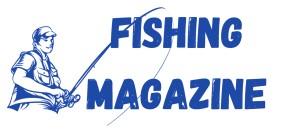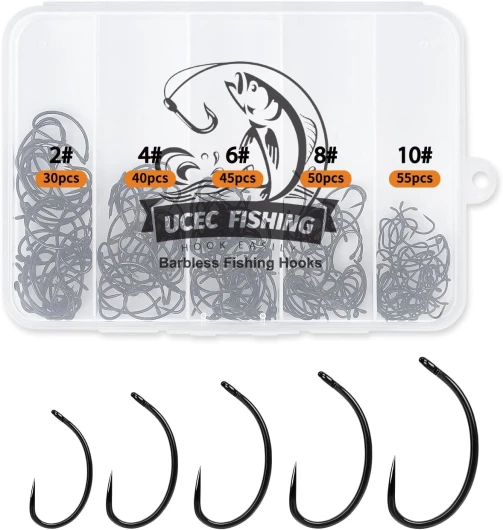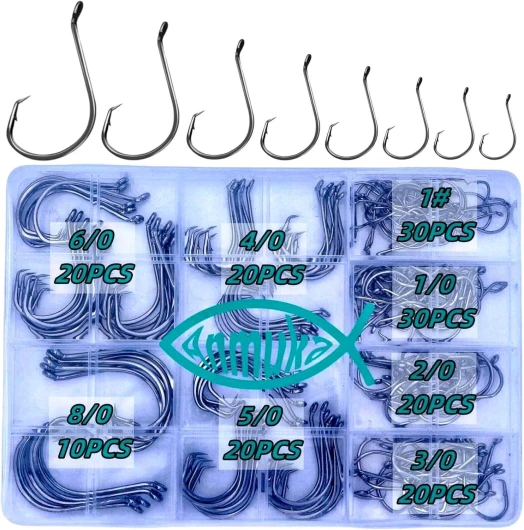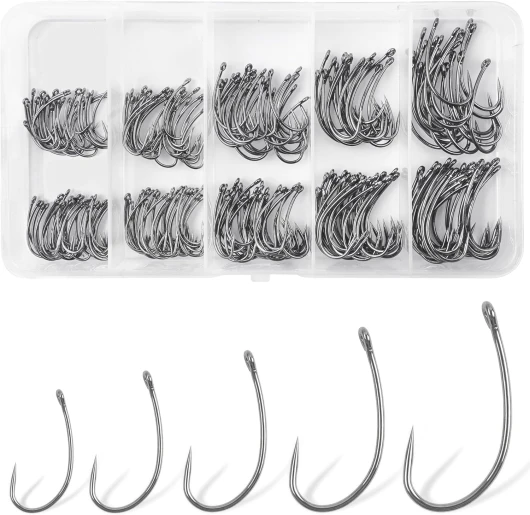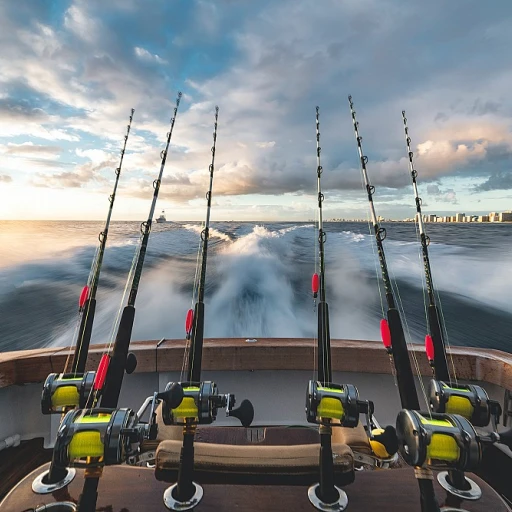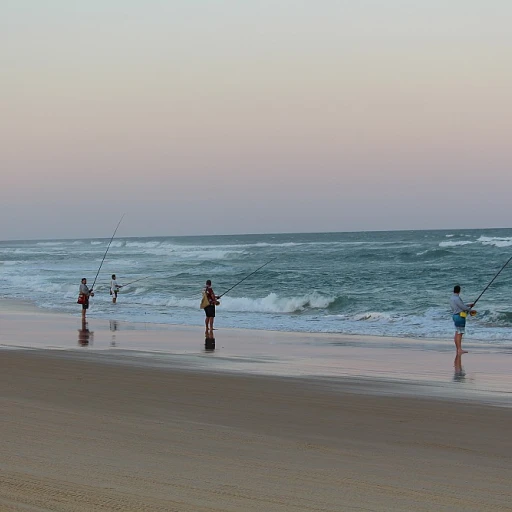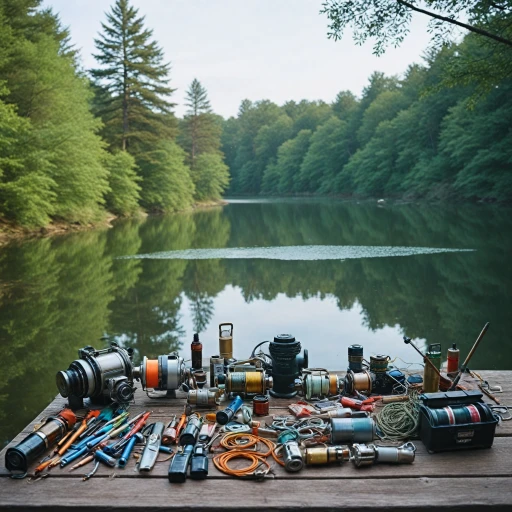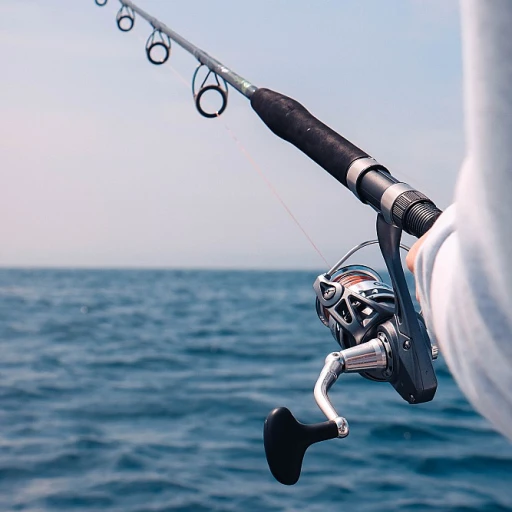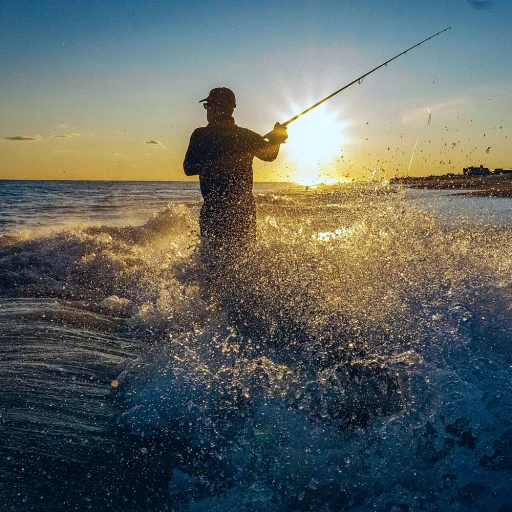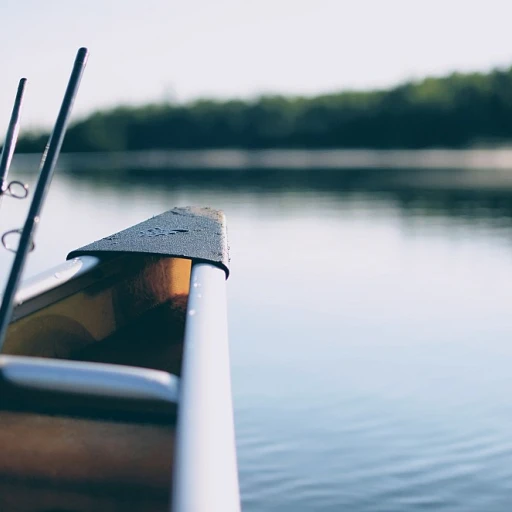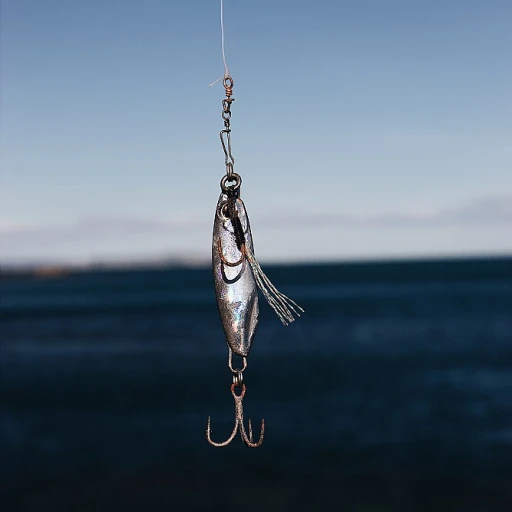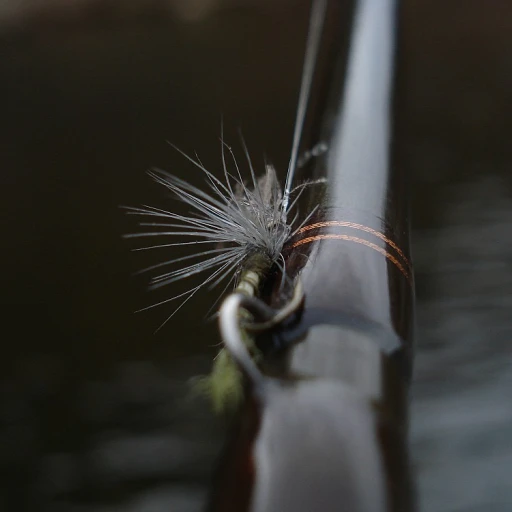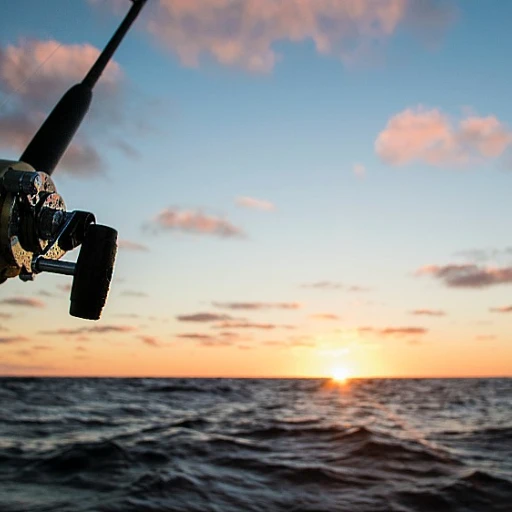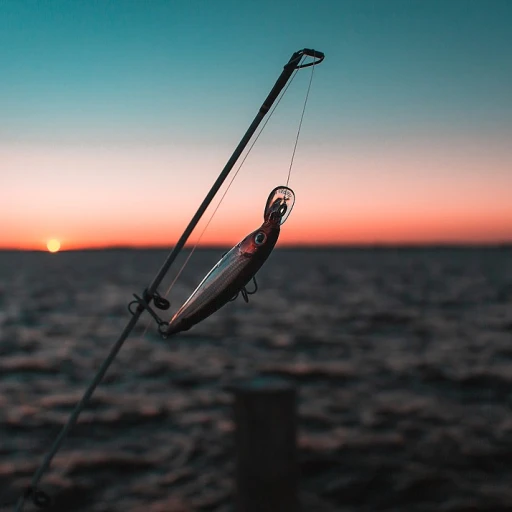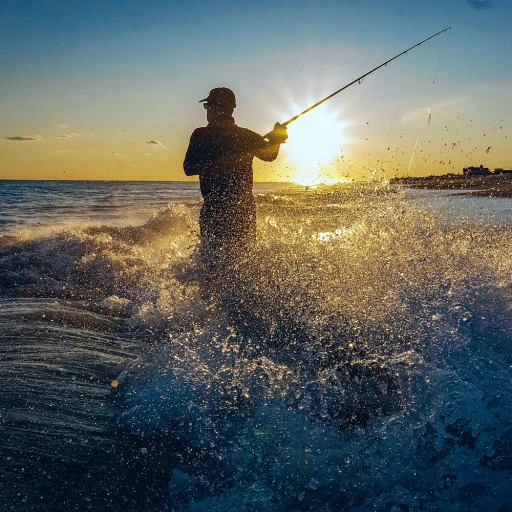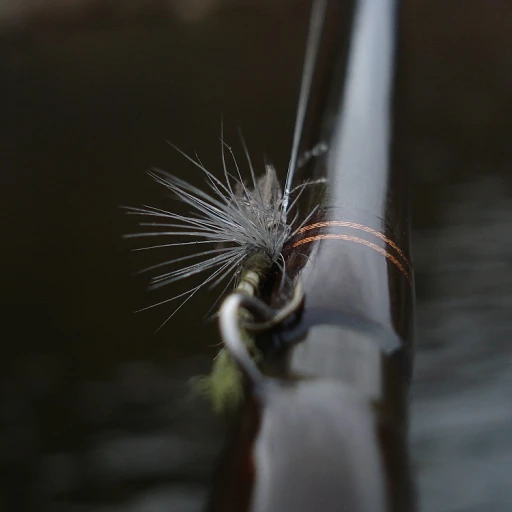
Understanding Circle Hooks
Getting to Know Circle Hooks
Circle hooks have gained popularity among recreational fishermen for their unique design and effectiveness. Unlike traditional hooks, circle hooks are characterized by their rounded shape and inward-pointing tip. This design allows the hook to catch fish in the corner of the mouth, reducing the likelihood of deep hooking and making it easier to release fish unharmed.
Circle hooks are particularly favored in fisheries targeting species like catfish and are often used in both drifting and trolling techniques. The hook's shape ensures that it rotates as the fish takes the bait, naturally setting itself in the fish's mouth lip. This reduces the need for a strong hook set, which can sometimes harm the fish.
When selecting a circle hook, consider factors such as the size of the fish you're targeting and the type of bait you'll be using. Options range from standard to octopus circle hooks, each designed for specific fishing scenarios. High carbon steel is a common material choice, offering durability and strength for various fishing conditions.
For those interested in catch and release, circle hooks are an excellent choice. They help ensure that fish caught can be released with minimal injury, promoting sustainable fishing practices. For more advanced tactics to ensure fish survival, you might find this resource helpful.
Advantages of Circle Hooks for Catch Rates
Enhancing Catch Rates with Circle Hooks
Circle hooks have revolutionized the way anglers approach their catch strategy, offering several advantages over traditional hooks. The unique design of circle hooks, with their circular, offset point, significantly increases the likelihood of a successful hook set. Unlike standard hooks, circle hooks are specifically designed to hook fish in the corner of the mouth, reducing instances of gut-hooking which can harm fish, especially during catch and release situations. One of the main benefits of using circle hooks is their effectiveness across various fishing techniques, from drifting to trolling. For species like catfish, which are notorious for their elusive bites, circle hooks have proven especially effective. The hook’s shape naturally adjusts to the fish's movement, allowing anglers to hook fish securely without the need for an aggressive hook set. In addition to improving catch rates, circle hooks assure durability with their high carbon steel composition. This makes them reliable for both fresh and saltwater fisheries, ensuring longevity even after repeated use. The circle hook's design also accommodates various bait types, whether you're using a live rig or artificial lures, making it a versatile choice for any angler. For those looking to maximize their fishing trips, it’s hard to overlook the benefits circle hooks offer. These hooks can lead to an increase in fish caught, making each fishing adventure more productive. To further hone your fishing skills, consider learning from techniques like mastering the art of cleaning a walleye, which can provide valuable insights into hook selection and fish handling for optimal results. Check out more on this skill in this comprehensive guide.Circle Hooks and Fish Conservation
The Role of Conservation When Using Circle Hooks
Circle hooks play an instrumental role in promoting fish conservation. These hooks are uniquely designed to reduce harm to fish, making them a vital tool in recreational fishing practices aimed at sustainability. When a circle hook is used, it is more likely to set in the fish's corner mouth rather than deeper in the throat or gut. This outcome significantly decreases the chance of internal injuries, enhancing the fish's probability of survival upon release. This aspect is crucial for fisheries that operate on catch-and-release policies, as the health of the fish population must be maintained to ensure the ongoing success of the fishing ecosystem. Additionally, the use of circle hooks aligns well with best practices in ethical fishing. By enforcing the use of hooks designed to minimize harm, fishing enthusiasts contribute to the broader efforts of conserving aquatic life. When selecting circle hooks, it is vital to consider the right size and type, such as offset or octopus circle hooks, to match the species you are targeting. This consideration not only supports catch rates but also aligns with conservation objectives. Moreover, the composition of circle hooks, often made of high carbon steel, adds to their durability and effectiveness. These hooks are both resilient and reliable, ensuring that the fish is less likely to experience undue stress during the catching process. With sustainable practices becoming increasingly prioritized, the choice of suitable tackle plays a significant role in preserving our natural waters. In summary, by implementing circle hooks, recreational fishermen contribute to sustaining fish populations and uphold the principles of responsible angling. For a deeper understanding of effective practices in catch and release, you can explore further in this article covering advanced tactics to ensure fish survival: techniques to ensure successful catch and release.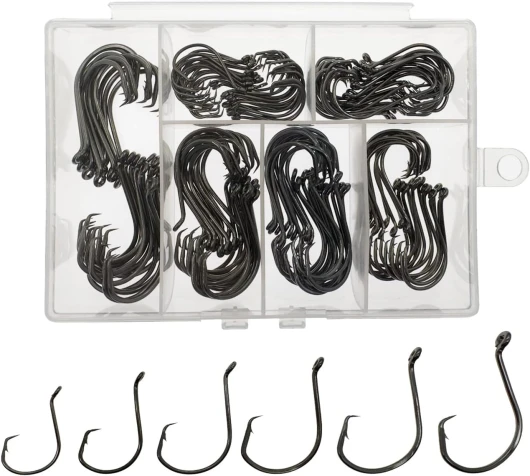
- + Includes 150 pieces of hooks
- + Variety of 6 sizes (1/0 to 6/0)
- + Made of high carbon steel for durability
- + Comes with a portable plastic box for easy storage
- + Ideal for catfish and octopus fishing
Choosing the Right Circle Hook for Your Needs
How to Choose the Ideal Circle Hook
Selecting the correct circle hook can significantly impact your fishing success and conservation efforts. There are several factors to consider when choosing the ideal hook for your fishing needs, particularly when targeting specific fish like catfish or using various fishing styles such as drifting or trolling.- Hook Size and Shape: The size of the hook is crucial as it should match the size of the bait and the targeted fish species. For larger fish such as catfish, a larger circle hook will be more effective. The shape of the hook, whether it is an octopus circle or a standard design, can also influence performance. The point should be sharp to ensure it penetrates efficiently, facilitating better hook sets.
- Material Quality: High-quality materials such as high carbon steel are recommended, as they are durable and provide enough strength to handle larger fish. Consider the benefits of using a high carbon hook for longevity and resistance to bending or breaking under pressure.
- Offset vs. Non-offset: An offset circle hook might be more suitable for certain fishing conditions, but be cautious as these are often prohibited in certain fisheries due to the increased chance of deep hooking. Check local regulations to ensure compliance.
- Design Features: Some circle hooks come with added features such as a black finish for camouflage or a corner mouth design that helps in safely hooking fish in the mouth lip. When making shipping orders, inspect these features to ensure they align with your specific fishing strategies.
Tips for Using Circle Hooks Effectively
Mastering the Art of Using Circle Hooks
Circle hooks are a game-changer in recreational fishing, but using them effectively requires a bit of finesse. Here are some tips to help you make the most of these unique hooks and improve your fishing experience.
- Choose the Right Size and Shape: The size and shape of your circle hook can significantly impact your catch rates. Consider the type of fish you're targeting, such as catfish or other species, and select a hook that matches the fish's mouth size. High carbon steel hooks are often recommended for their durability.
- Proper Hooking Technique: Unlike traditional hooks, circle hooks are designed to hook fish in the corner of the mouth. Avoid setting the hook with a sharp jerk. Instead, let the fish take the bait and apply steady pressure to ensure a secure hook set.
- Use the Right Bait: The bait you choose can affect how well the circle hook performs. Ensure the bait is securely attached to the hook, allowing the point to remain exposed for optimal hooking.
- Consider the Offset: Some circle hooks come with an offset design, which can enhance hooking efficiency. Experiment with both standard and offset hooks to see which works best for your fishing style.
- Drifting and Trolling Techniques: When drifting or trolling, circle hooks can be particularly effective. The slow, steady movement helps the hook find its way to the fish's mouth lip, increasing the chances of a successful catch.
- Practice Catch and Release: Circle hooks are excellent for catch and release fishing, as they minimize injury to the fish. Ensure you handle fish gently and release them promptly to promote fish conservation.
By following these tips, you'll be well on your way to mastering the use of circle hooks and enhancing your fishing adventures. Remember, practice makes perfect, so don't hesitate to experiment and find what works best for you.
Common Misconceptions About Circle Hooks
Debunking the Myths: Getting to Know Your Circle Hooks
Circle hooks have earned their place in recreational fishing, yet several misconceptions continue to swirl around. Let’s clarify a few common myths to ensure you’re making the most of these efficient tools.
Myth 1: Circle Hooks Are Only for Beginners
It’s often believed that circle hooks are designed merely for novices. While they do indeed make setting the hook easier, thanks to their distinctive shape and the way they hook fish in the corner of the mouth, they are valuable for anglers of all experience levels targeting various fisheries, from catfish to offshore species. Their unparalleled ability to reduce catch-and-release mortality is advantageous for everyone, not just beginners.
Myth 2: Circle Hooks Don't Require Skill
While it may appear that circle hooks do all the work, using them effectively still involves skill. Anglers need to understand how to properly rig them, choose the right offset angle, and align their fishing techniques with the current conditions. Learning how to skillfully incorporate them into drifting or trolling activities can significantly enhance results.
Myth 3: They're Not Effective for All Fish Species
Circle hooks are incredibly versatile. Although they are predominantly popular in certain types of fishing such as catfishing, they can be effectively utilized for a broad range of species, including larger game fish. Choosing the right octopus circle or standard circle hooks can facilitate successful catch across diverse water bodies.
As you continue your fishing adventures, remember that leveraging circle hooks requires not just the right hook, but the right technique and understanding of your fishing environment. Take the time to understand these hooks' unique characteristics—be it materials like high carbon steel or specific designs like octopus—and practice using them to enhance your fishing success.
